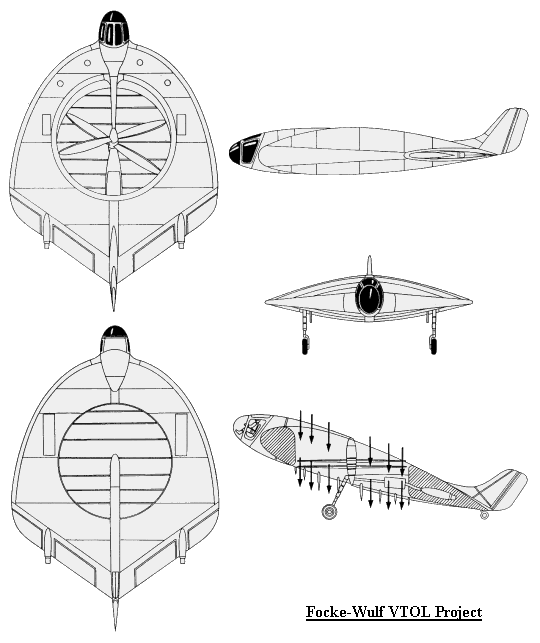
The Miracle Fighter
The fantastic Focke-Wulf "miracle fighter" is one of the few German secret designs which was developed into publicly acknowledged military airplanes.
Its story begins in 1942. German aeronautical research records for that year include a report by the Aerodynamic Testing Center in Göttingen, entitled "The Flying Wing". In this report, authors E. Von Holst, D. Küchermann and K. Solf examined the possibility of conceiving an aircraft that would combine the propulsion and lifting bodies, based on the flight of dragonflies as a source of inspiration. The original idea called for a powerful, fuselage-mounted propulsion engine to power two wide-diameter, inverse-rotation propellers. The lightweight and simple turboprop engine had not yet been developed.As Carlos Simó correctly points out in the Encyclopedia Más Allá de los Ovnis, such a vertical take-off device could revolutionize German aeronautics.
Setbacks in the development of the propellers, according to Sengfelder, and the utter defeat of the Germans, kept this most interesting aircraft from ever making it off the drawing board. The blueprints fell into American hands, who realized in June 1945 that an advanced fighter was about to be born. These documents were stamped SECRET and the ramjet-powered wing was never officially built.
Nonetheless, in spite of the belief that the miracle fighter was never officially developed, the fact is that the U.S.--ultimate destination of the information liberated from the Nazis--built at least two aircraft suspiciously similar to the revolutionary German project.
These were the Lockheed XFV-1 "Tailsitter" and the Convair XFY-1 "Pogo", both equipped with fixed wings. In either case, propulsion was provided by means of a 5,850 HP Allison YT40-A-14 turbine, and two reverse propellers 4.8 meters in diameter. Although test flights could be completed with relatively favorable results, the U.S. Navy was not interested in "tail take-off" and the project was abandoned. This is, at least, the official story.
Triebflugel - The History Of Focke-Wulf's Vertical Take-Off Landing (VTOL) Project








Sem comentários:
Enviar um comentário